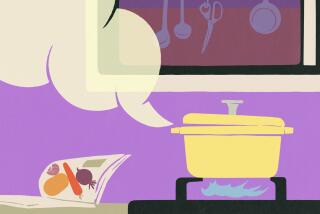Strategies to make 2018 your best wine year ever

It’s another year, another occasion to make this year your best year in wine. While the calamitous state of the world — fire, flood, mud, political tumult — may compel you to emphasize quantity rather than quality, it’s probably better to attend to what goes into the glass rather than how much. So let’s make this the year we drink smarter, more thoughtfully — and broaden horizons.
This is the year we expand our wine latitudes
The political climate, of course, is not the only climate that’s changed. Global warming has expanded the geographical bandwidth where grapes can be grown, and these nascent wine regions in both the northern and southern latitudes amount to areas of discovery. Canada, England, Patagonia, Vermont — all of these places are making wine, good wine, where very little existed 20 years ago.
In most cases these are already established grape varieties that now grow in conditions that have become more hospitable for them, resulting in better, more consistent, less marginal wines. The new sparkling wine plantings in southern England are more or less the poster region for this trend, but red bottlings from northern (and southern) climes are more prominent than ever. It’s not hard to find pristine Cabernet Francs and blends from the Finger Lakes of New York and from British Columbia, Blaufränkisches and Zweigelts from Austria, beautiful Pinot Noirs from ever more dependable vintages in Tasmania and New Zealand’s Central Otago. All of these places make the case that, for now at least, climate trends can have a salutary impact.
No place is more surprising than Germany’s red wines, once an almost unimaginable category from a place best known for its winter-hardy whites (Riesling, in the main). Varieties such as Spätburgunder (Pinot Noir), Dornfelder and Trollinger from Germany’s northern latitudes are producing charming, flavorful, viable reds. They’re light-bodied, so not likely to stand in for your Napa Cab collection anytime soon, but they’re a lively weight and texture for light meals, especially in early spring.
Three to try from the nether latitudes: the crisp, lemony Nyetimber Blanc de Blancs sparkling wine from Sussex (England); Tolpuddle’s Coal River Valley Pinot Noir (Tasmania), a crunchy glass of strawberries and herbs; and the Knauss Trollinger Boutanche from Württemburg (Germany), a juicy red berry red with just 10% alcohol meant to be chilled (slightly) and glugged.
This is the year we make commitments
Many consumers have decided that for the sake of their families, and the planet, they should support sustainable and organic farming. They’re willing to foot the extra expense for organic vegetables, humanely raised meats, and products free of additives and preservatives.
With wine, though, that conviction often seems more fluid, in part because such commitments get expensive. It costs money for winegrowers to go fully organic, to walk away from cheaper remedies for controlling pests and weeds and rot, to hand-pick fruit, to resist the urge to cut corners. And yet the psychological barrier between a $15 bottle of wine and a $25 bottle can be formidable.
For the most part, the result is better wine — more expressive, more deliberative, more authentic and more expressive of place, a thing wine does better than any other agricultural product. That is reason enough to shell out a few extra bucks.
Hundreds to try: The number of organic and biodynamic producers mushrooms every year. Large wineries such as Oregon’s King Estate, Mendocino’s Bonterra and Burgundy’s Joseph Drouhin practice, as do countless small ones, such as Bonny Doon and Robert Sinskey in California and Rippon in Central Otago, New Zealand. Ask your retailer to single out a few.
This is the year we taste — a lot
To broaden horizons, you have to taste, and taste a lot: Taste bad wines and good wines and weird wines and wines that you think you don’t like, wines that nudge you out of your comfort zone. This is, after all, a beverage with an almost inexhaustible palette of aromas and flavors.
As an area of study too it is practically inexhaustible, a boundless repository of history, science, tradition, geographical conquest, lore and myth. Wine rewards immersion, whether you’re a geek or a newbie; it will bring you delights every time you uncork a new bottle.
So resolve that this will be the year you pull threads, the year you go out to eat and buy 2-ounce tastes of wines from places you don’t recognize, where you place your trust in your local sommelier, where you check out those pouring machines (Cruvinet dispensers) in wine shops, where you attend tastings, where you pepper your bartender with questions to help you get to the bottom of this boundless topic.
And a few online wine tips
In addition to getting in the face of your local retailer, there are websites that reward the curious, from dilettantes to full-on geeks. Karen McNeil’s website, winespeed.com, serves as a supplement to her excellent, introductory “The Wine Bible.” Madeline Puckette’s winefolly.com is a great entry-level resource for varieties and regions all over the world (and supplements her own essential guidebook, with Justin Hammack, “Wine Folly: The Essential Guide to Wine”).
If you want to tap into the blogosphere, Jamie Goode’s wineanorak.com, Alice Feiring’s thefeiringline.com, Bertrand Celce’s wineterroirs.com and Elaine C. Brown’s wakawakawinereviews.com will each, in their way, give you more geeky depth, not to mention plenty of informed opinion; all of them provide links to still other blogs worth exploring.
More to Read
Eat your way across L.A.
Get our weekly Tasting Notes newsletter for reviews, news and more.
You may occasionally receive promotional content from the Los Angeles Times.






